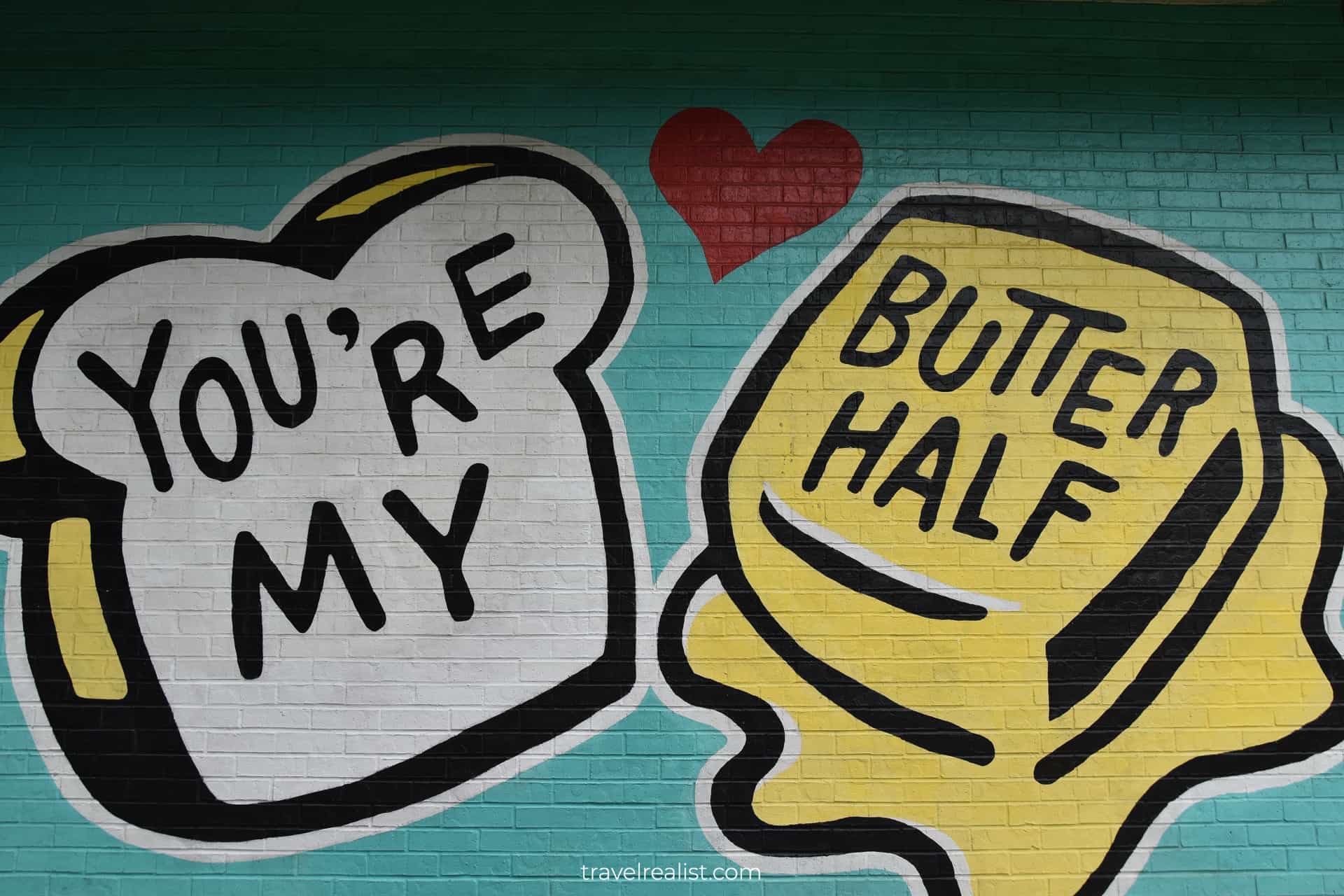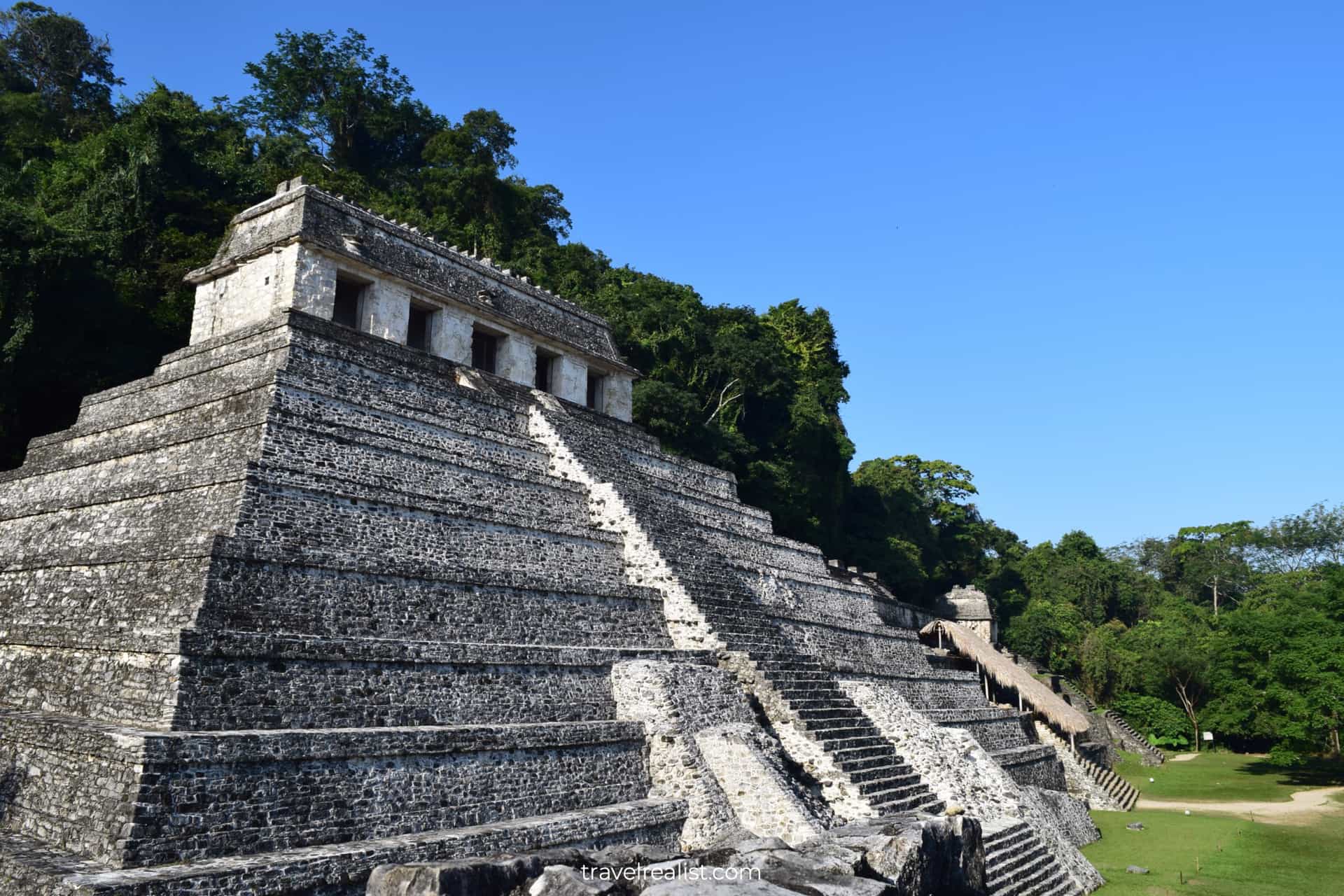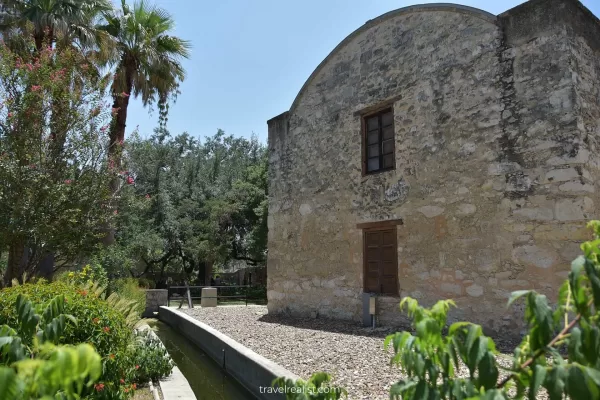10 Best Places to See Bluebonnets in Central Texas
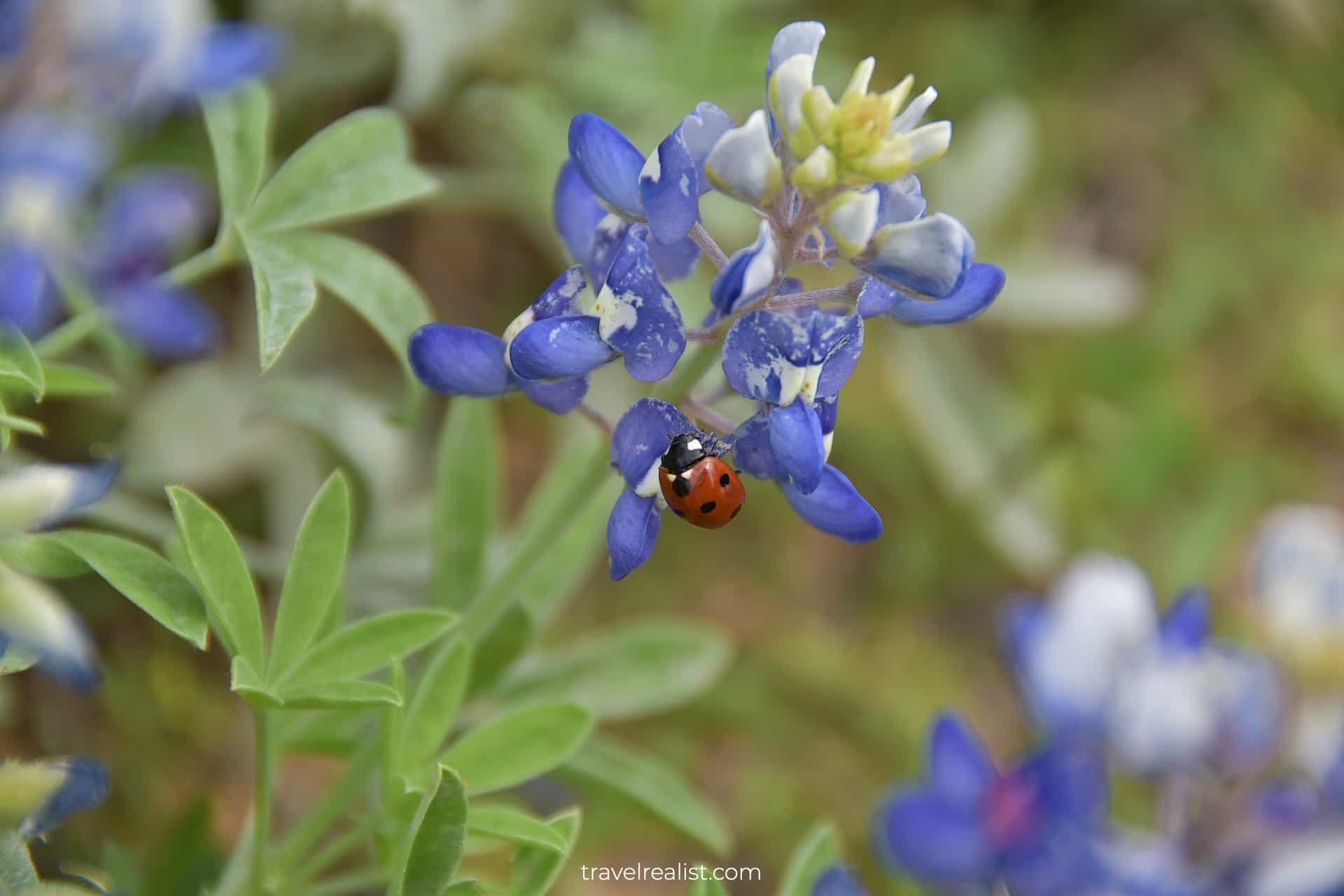
This realistic List of Best Places helps you plan your next trip to see bluebonnets in Central Texas.
Bluebonnet is a state flower of Texas. These blue wildflowers could add a different look to your spring trip to the Lone Star State.
This post includes affiliate links that will earn us commission if you make a purchase via these links.
Meadows and highways across Texas welcome blue flowers every March. It is a few months ahead of a wildflower season in the states up north, like New Jersey and Washington.
Blooming bluebonnets attract a few visitors to the Lone Star State. It helps that these flowers bloom around the spring break and South By Southwest (SXSW) Conference and Festival.
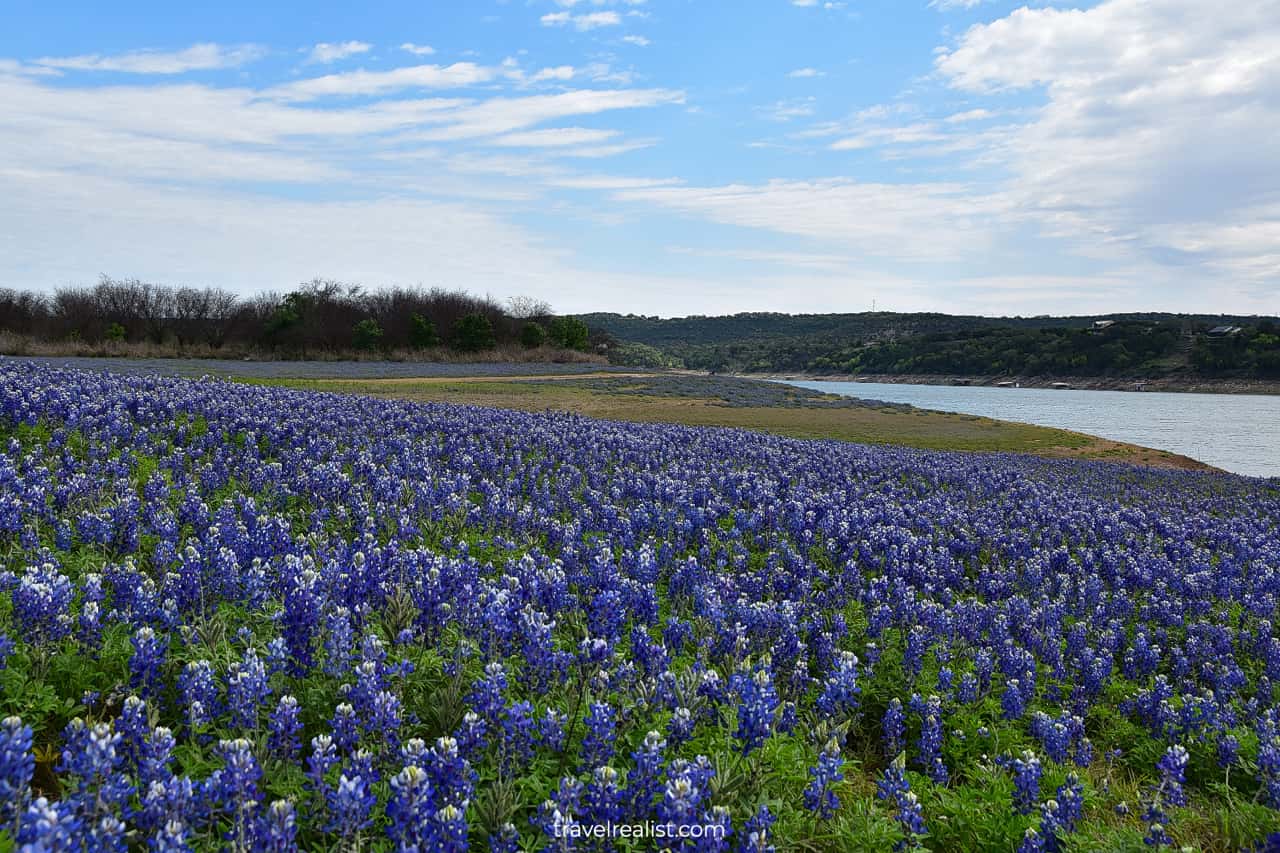
Still, bluebonnets have not yet turned into a tourist magnet like Cherry Blossom in Washington, D.C. Use this observation to your advantage. You could see the wildflowers without the large tourist crowds.
The next few sections of this List of Best Places to See Bluebonnets in Central Texas describe the top destinations. You will learn about things to consider before jumping into a car to the bluebonnet spots.
1. McKinney Falls
- Address: 5808 McKinney Falls Pkwy, Austin, TX 78744.
- Nearest Large City: Austin.
McKinney Falls State Park in Austin is an unbeatable destination to see bluebonnets in Central Texas. This park is near Austin Airport, making it an ideal spot for both local and out-of-state visitors.
You will find bluebonnets throughout the park. But you should head to the Bluebonnet Meadow after checking in at the park headquarters. This field is an astonishing display of wildflowers every spring.
The park’s easy-to-reach location, hiking trails, and scenic views make it a popular destination. You might not get into the park unless you secure a day pass in advance.
It costs $6 per adult to see bluebonnets at McKinney Falls. A Texas State Parks Pass might be a good idea for frequent visitors. The pass will pay for itself if you visit McKinney Falls once a month.
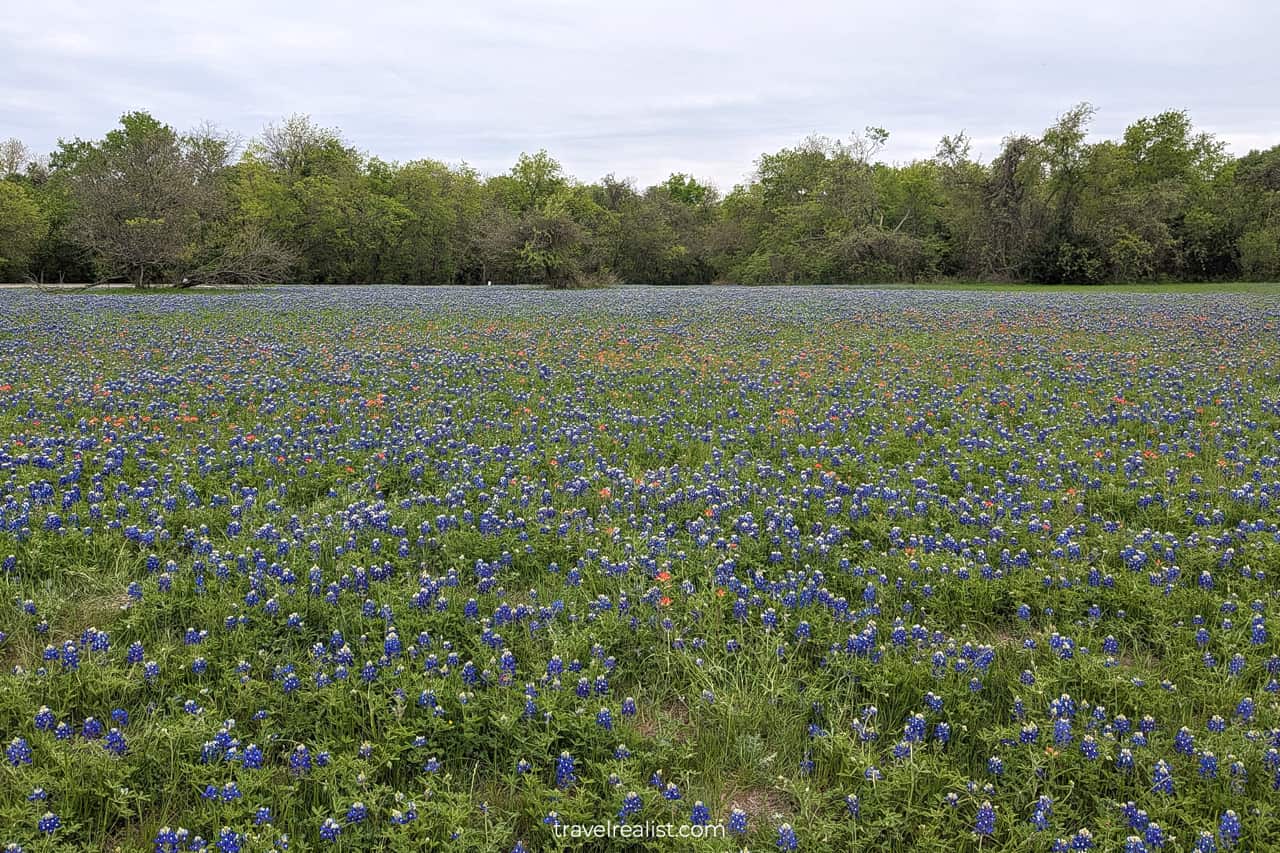
2. Muleshoe Bend
- Address: 2820 Co Rd 414, Spicewood, TX 78669.
- Nearest Large City: Austin.
Muleshoe Bend Recreation Area is a close second best place to see bluebonnets in Central Texas. This park is in the Texas Hill Country along the shores of Lake Travis.
The wildflower fields span from the gravel drive all the way to the river. In fact, the Colorado River is the main selling point for seeing bluebonnets at Muleshoe Bend.
You could get amazing pictures of bluebonnet covered hills. Only a couple of boat ramps on the other river bank will be in the way. These views are worth a 60-minute drive from Austin.
Muleshoe Bend charges a per person fee. Expect to pay $5 per adult to see bluebonnets in this park. You could get an annual pass, too. But it will take a lot of trips to break even on this $150 pass.
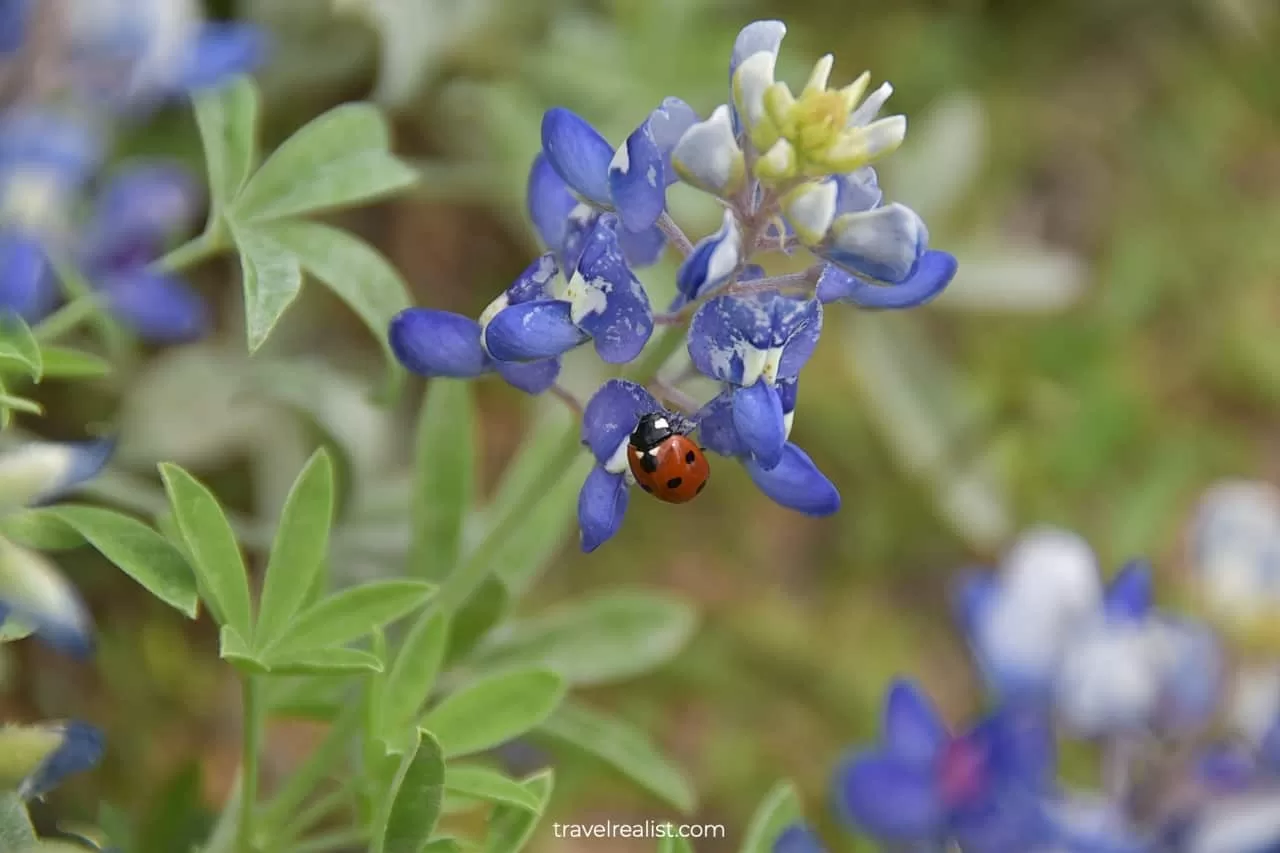
3. St. Edward’s University
- Address: 3001 S Congress Ave, Austin, TX 78704.
- Nearest Large City: Austin.
No list of best places to see bluebonnets in Central Texas is complete without St. Edward’s University. The campus along Congress Avenue dates back to 1877 and is well worth a visit.
Most visitors to Austin have seen a castle like building south of the Colorado River. While it is no University of Chicago or Harvard, Main Building is an impressive Gothic Revival structure.
Imagine bluebonnets in front of a 120-year old building. You cannot ask for a better backdrop for your pictures. This combination sets St. Edward’s University apart from all other places on this list.
Parking is the only downside for visiting this campus. You have to pay $6 a day to park on campus. But the system is quite confusing. Instead of paying online or at a machine, you need a permit.
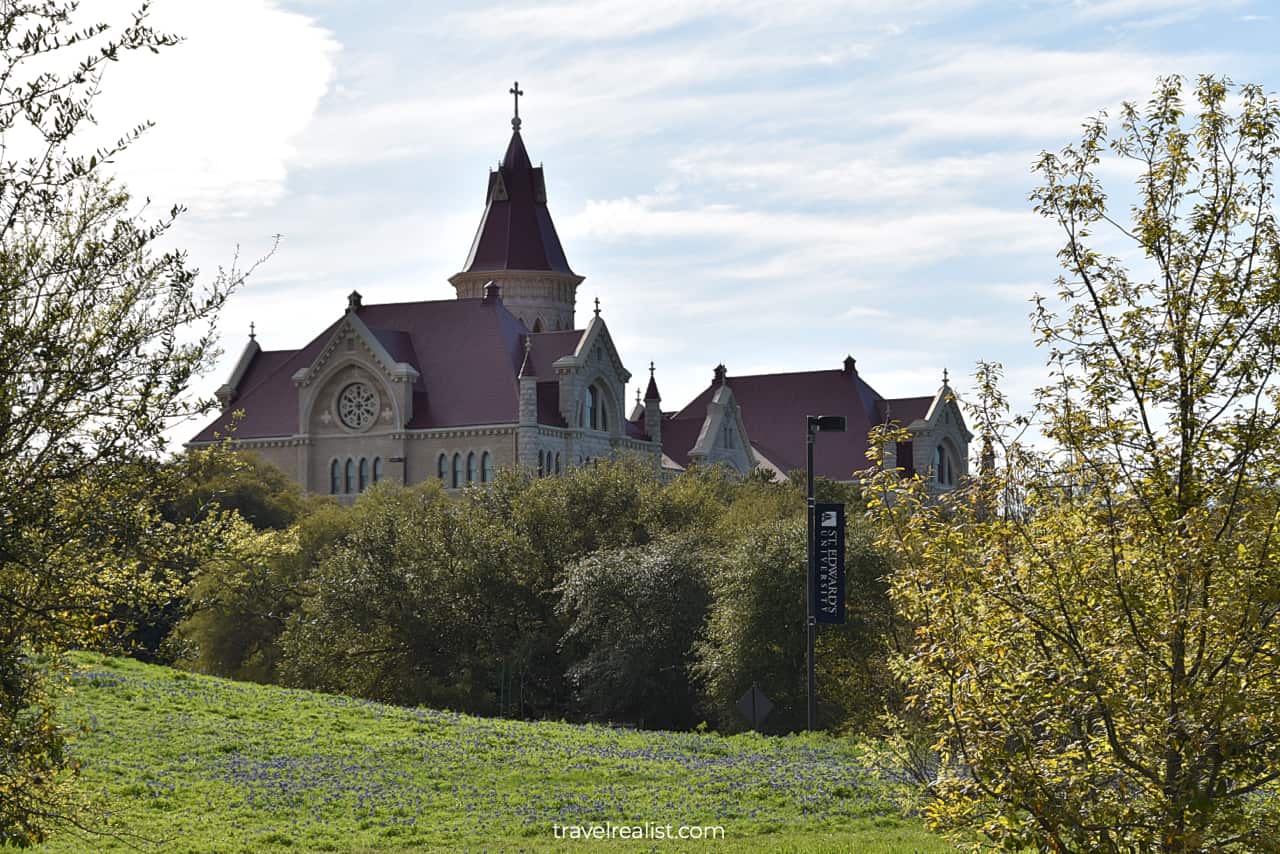
4. Willow City Loop
- Address: Willow City Loop, Willow City, TX 78624.
- Nearest Large City: San Antonio.
Willow City Loop is another amazing place to see bluebonnets in Texas. It is the only bluebonnet spot on this list that is closer to San Antonio than to Austin.
This 13-mile (21-km) paved scenic drive became very popular over the past decade. Many visitors to Enchanted Rock, LBJ Ranch, and Pedernales Falls, make a stop at Willow City Loop in the spring.
Overtourism became a real problem on this scenic route. Visitors would walk on wildflowers and enter private property while taking pictures. The response from the locals was to put higher fences.
As a result, there is virtually no parking along Willow City Loop. Be careful if you drive this route. The locals might report you for trespassing. No bluebonnet picture is worth a trip to a sheriff’s department.
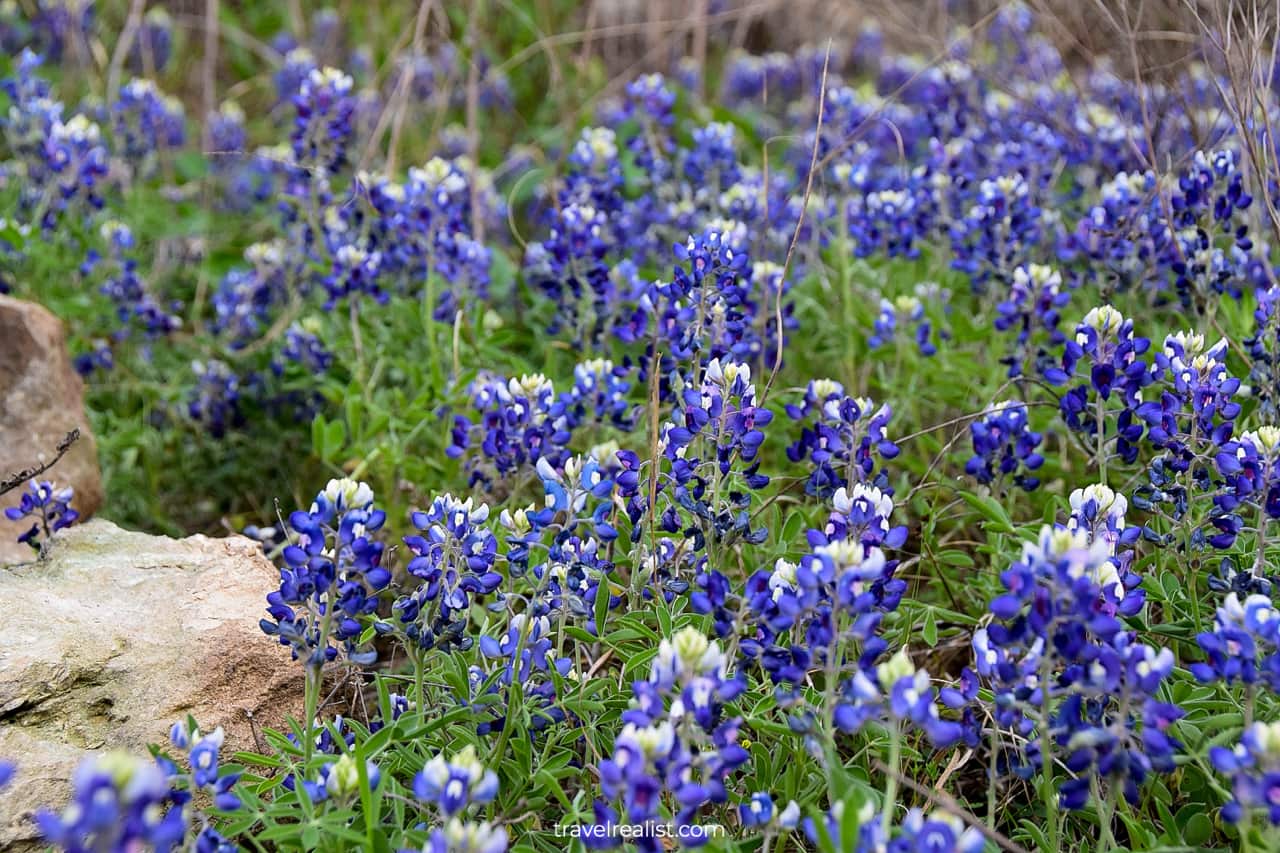
5. Balcones District Park
- Address: 12017 Amherst Dr, Austin, TX 78759.
- Nearest Large City: Austin.
Balcones District Park is a lesser known spot to see bluebonnets in Austin, Texas. This city park is north of Domain neighborhood, just off Mopac Highway or TX-1 Loop.
You will find a small parking lot, swimming pool, and playground in this park. Bluebonnet fields are next to all of these landmarks. A paved path is an easy way to go between different wildflower meadows.
You should not expect huge bluebonnet fields like at McKinney Falls or Muleshoe Bend. But it is a hard to beat a pretty neighborhood park in a geographical center of Austin metro area.
Balcones District Park is also the trailhead for the Northern Walnut Creek Trail. This 6.6-mi (10.6-km) hike and bike trail gives you a great way to extend your visit. There is even a waterfall in this park.
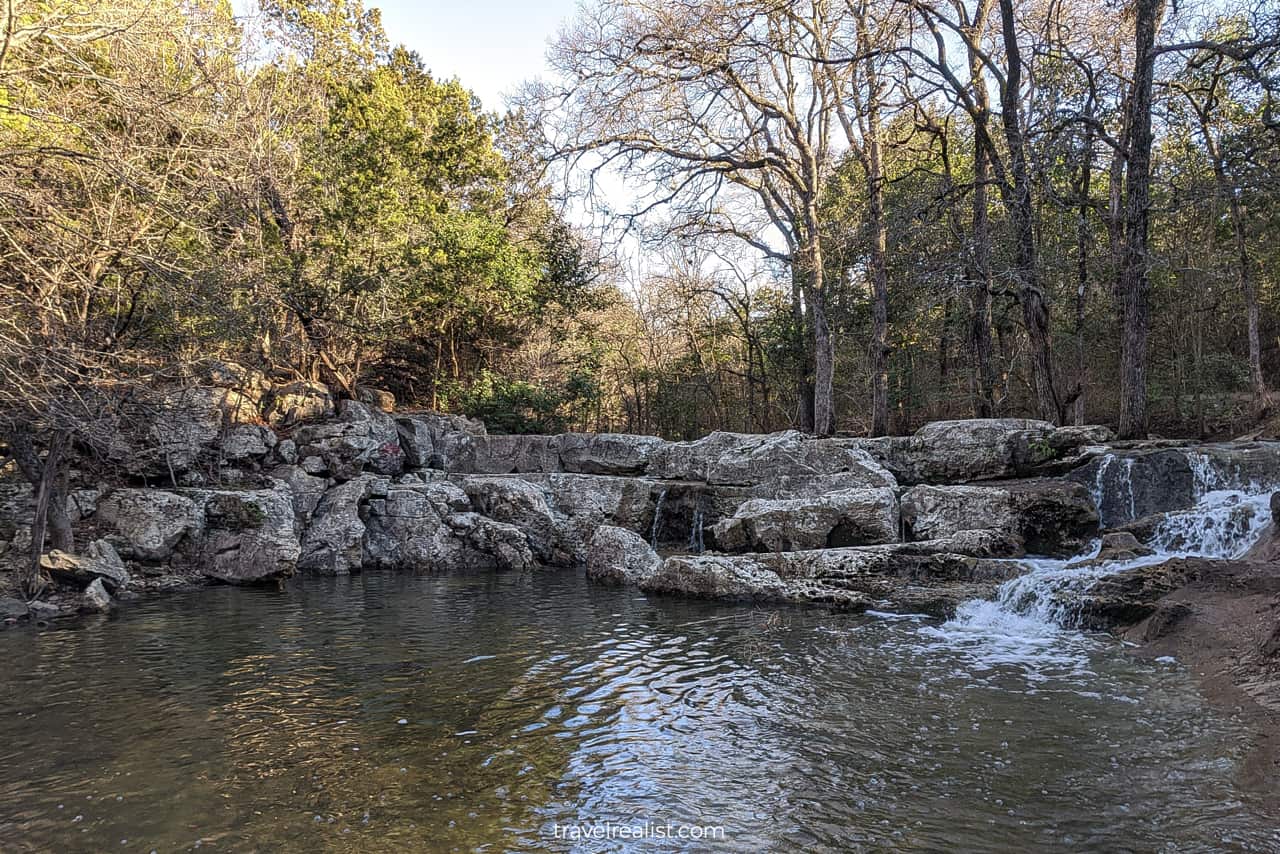
6. Brushy Creek Lake Park
- Address: 3300 Brushy Creek Rd, Cedar Park, TX 78613.
- Nearest Large City: Austin.
Brushy Creek Lake Park is another great place to see bluebonnets in Central Texas. This park is the best bluebonnet spot to visit for the residents of Cedar Park, Leander, and Liberty Hill.
Most bluebonnets at Brushy Creek are in the field near the Cedar Pavilion. This wildflower meadow is a short walk from the main parking lot.
This free city park offers visitors a lot of things to do beyond the bluebonnet viewing. Kids will enjoy the playground and sports park. Adults could take advantage of the picnic tables and bocce court.
And visitors of all ages could hike or bike the 6.4-mi (10-km) out-and-back trail. There is both a paved path for walking and a dirt single track for mountain and gravel bikers.
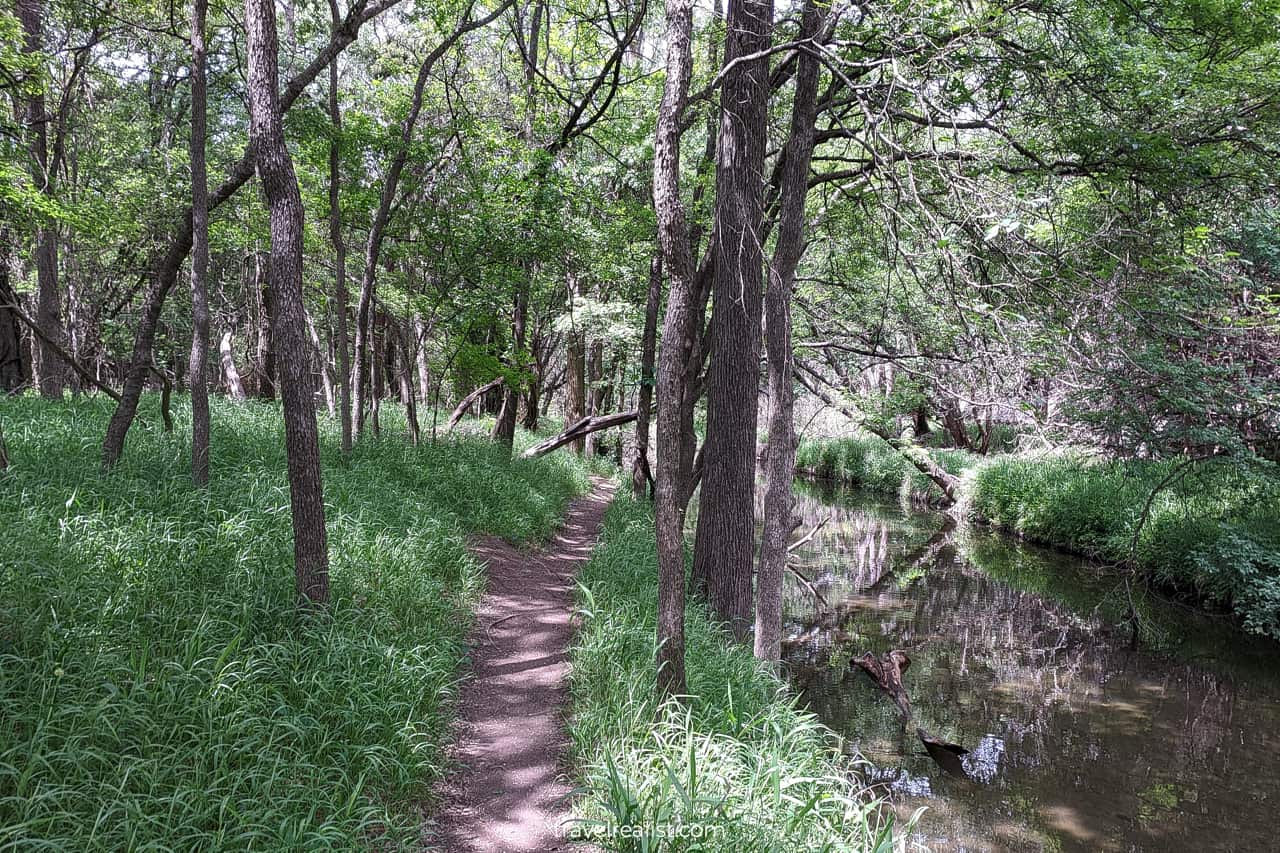
7. Lady Bird Johnson Wildflower Center
- Address: 4801 La Crosse Ave, Austin, TX 78739.
- Nearest Large City: Austin.
The Lady Bird Johnson Wildflower Center is a no-brainer place to see bluebonnets in Central Texas. This botanical garden is just outside of South Austin, near Mopac Highway South (TX-1 Loop).
You could find almost 900 different native plants at this wildflower center. It is hardly a surprise that bluebonnets are part of this collection. The gardens are open from 9 a.m. to 4 p.m. in the spring.
You might wonder why this beautiful garden scores so low on the list of the best places to see bluebonnets. The answer is quite simple: it costs $15 per adult (18+) to visit this park.
It is a high fee to pay when most other bluebonnet spots are (almost) free to visit. A membership costs $50 a year. It is comparable to America the Beautiful and Texas State Parks annual passes.
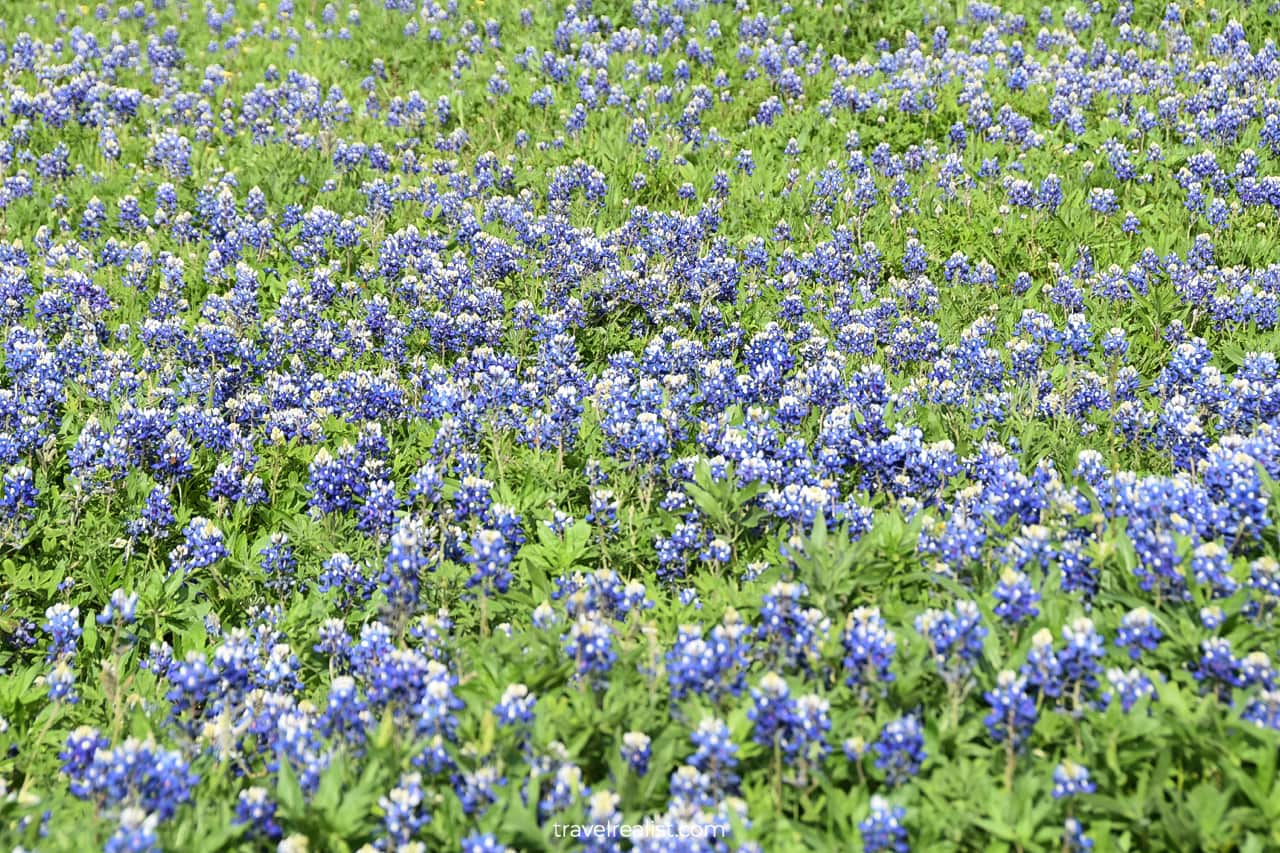
8. Grelle
- Address: 640 Co Rd 412, Spicewood, TX 78669.
- Nearest Large City: Austin.
Grelle Recreation Area is another great place to see bluebonnets in Texas. This park is off the beaten path in Spicewood, Texas. It is somewhat in the shadow of Muleshoe Bend, its better known neighbor.
The bluebonnet meadows in Grelle Recreation Area are next to County Road 412. You will notice blue wildflowers as you drive on this gravel road along the Colorado River.
You could take a 2.5-mi (4-km) loop trail after viewing bluebonnets on the shore. This easy path brings you through a grove. You will see a couple of additional wildflower meadows along the way.
It costs $5 per adult to visit Grelle. The price is the same as at Muleshoe Bend. But you might get a better return on your park fees. You will be enjoying bluebonnets with far fewer visitors.
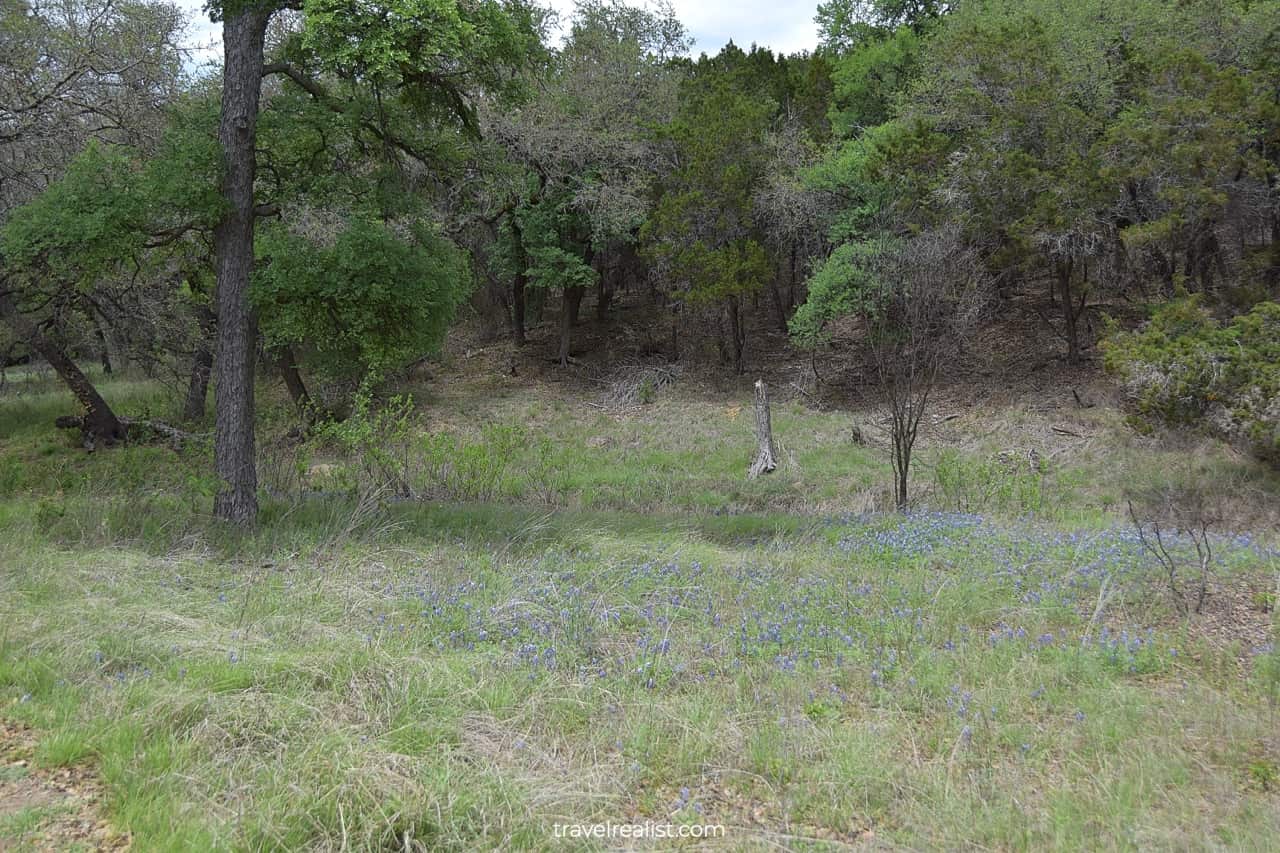
9. Meridian State Park
- Address: 173 Park Road #7 Meridian, TX 76665.
- Nearest Large City: Waco, Fort Worth, Dallas.
Meridian State Park is a solid destination to see bluebonnets. This park is on the northern edge of Central Texas. Some people might even consider this area part of North Texas.
Regardless of your stance on the regional classification, Meridian is a place to see wildflowers in the spring and summer. It is also true that a visit involves a long drive from other Central Texas cities.
Head to the Wildflower Field to enjoy bluebonnets, Indian paintbrush, and firewheels in March and April. Or wait till July to see enormous American Lotuses on the lake.
Bring your Texas State Parks Pass. It will help you and your companions save on a $5 per adult entrance fee. Not a bad deal at a $70 total cost.
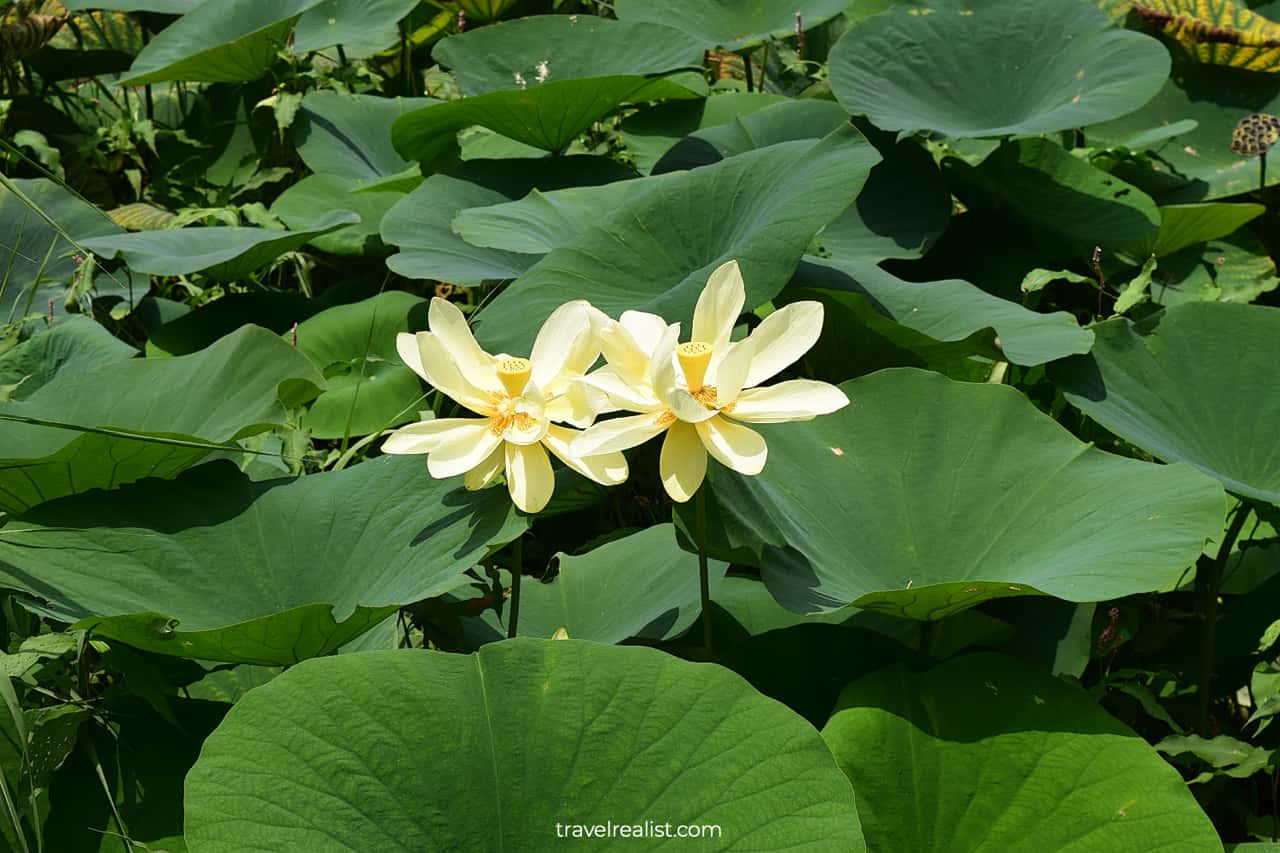
10. Bull Creek Greenbelt
- Address: 6701 Lakewood Dr, Austin, TX 78731.
- Nearest Large City: Austin.
Bull Creek Greenbelt is the last neighborhood destination to see bluebonnets in Austin, Texas. It refers to a group of parks along Bull Creek and TX-360 Loop.
Bluebonnet meadows are largest at Irving and Hazel Memorial Trail, St. Edward’s Park, and Bull Creek Park. You could enjoy amazing wildflower views in any of these free parks and trails.
Still, there are a few downsides of Bull Creek Greenbelt. All of its parking lots are small. You might have to wait for a while until a spot opens up. Drive carefully since the lots are unpaved with uneven surfaces.
A little wait at the dirt parking lots is a reasonable price to see flowers. But car break-ins are a different story. Sadly, they are quite common in these parks. It might be best to be quick or visit a different park.
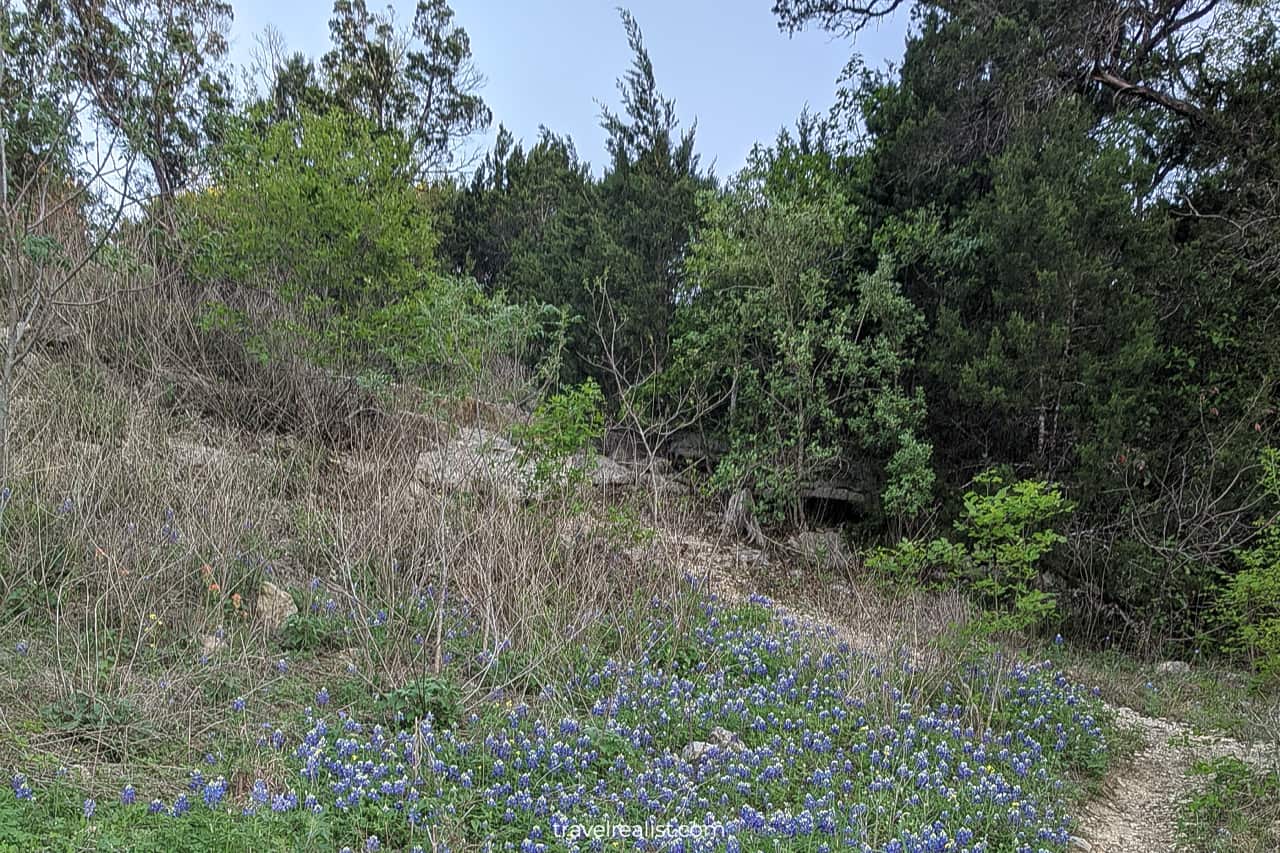
Takeaways: Best Places to See Bluebonnets in Texas
Bluebonnets are a real treasure of the Lone Star State. You should make an effort to see these beautiful flowers if you travel to Central Texas in the spring.
Start with free bluebonnet spots in the city. Brushy Creek and Balcones District Park are a short drive from the city center. They might not wow you with the views. But you will get a sense for the wildflowers.
You could then decide if you are ready to spend a bit of money to see larger bluebonnet fields. McKinney Falls, St. Edward’s University, and Lady Bird Johnson Wildflower Center are best destinations then.
If you care to enjoy bluebonnets in a natural setting, head to Muleshoe Bend, Willow City Loop, Grelle, or Meridian. All of these places are great day trip destinations if you have a car.
Even if you are not a flower person, give bluebonnets a fair chance. You might be amazed by the beauty of these tiny flowers. Who knows, you might even turn into a wildflower enthusiast afterwards.
Take a look at this Video List of the Best Places to See Bluebonnets in Texas. And visit the YouTube channel for the latest videos.
Frequently Asked Questions
Bluebonnets bloom between mid March and early April in most of Central Texas. Exact timing depends on the weather conditions. A milder winter might help these wildflowers bloom earlier.
March is a safe bet for planning a trip to see bluebonnets in Texas. You could see bluebonnets in most parks and along highways around mid to late March. But these wildflowers bloom in early April in some parts of the Lone Star State, too.
Central Texas is an excellent region to see bluebonnets bloom. Here are some of the best places to find bluebonnets in Central Texas:
1. McKinney Falls State Park (Austin)
2. Muleshoe Bend Recreation Area (Spicewood)
3. St. Edward’s University campus (Austin)
4. Willow City Loop (Willow City)
5. Balcones District Park (Austin)
6. Brushy Creek Lake Park (Cedar Park)
7. Lady Bird Johnson Wildflower Center (Austin)
8. Grelle Recreation Area (Spicewood)
9. Meridian State Park (Meridian)
10. Bull Creek Greenbelt (Austin)
Austin, Texas has lots of spots to see bluebonnets every spring. You could choose from parks and botanical gardens to university campuses and state highways. Here is where to see bluebonnets in Austin:
1. McKinney Falls State Park
2. St. Edward’s University campus
3. Balcones District Park
4. Lady Bird Johnson Wildflower Center
5. Bull Creek Greenbelt
6. TX-360 Loop (Capital of Texas Highway)
7. TX-1 Loop (Mopac Highway)
Bluebonnets grow across Texas. You will find the largest fields of these wildflowers in Central Texas and East Texas.
But bluebonnets are present in other regions like Big Bend in West Texas. Many Texas highways have these wildflowers, too.
Safe realist travels!

